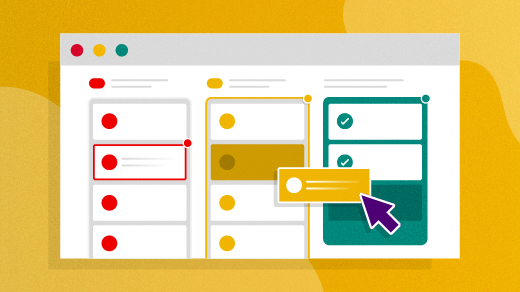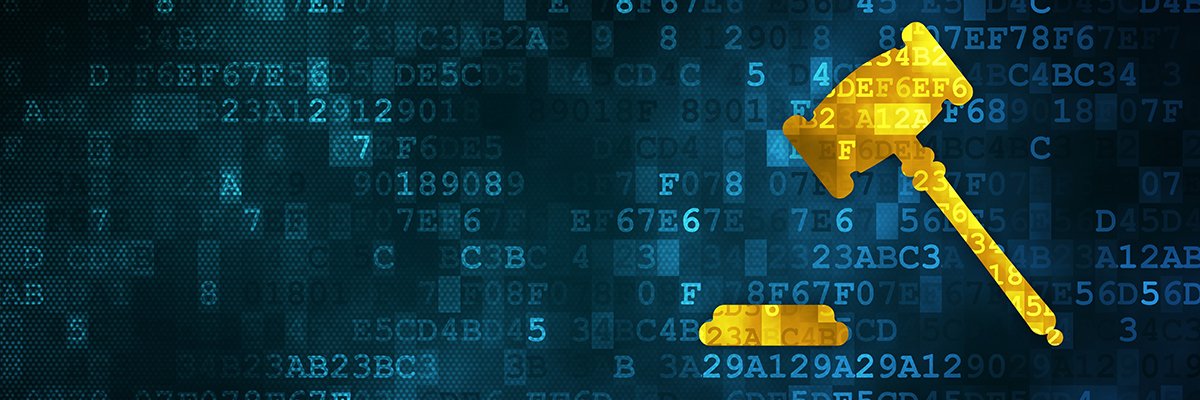E-commerce innovation in 2021 will look like what was projected for 2025

According to McKinsey, over 75% of U.S. consumers have changed shopping
behavior and changed to new brands during the COVID-19 pandemic. The top
three reasons for shopping for a new brand were value, availability and
convenience. The most important filter for discretionary spend is safety.
The ability to offer e-commerce, contact-less payments, order online
curbside pickup, and home delivery are all requirements in order to compete
in the next normal. Salesforce research shows that U.S. retailers offering
creative pickup options experienced 29% growth in sales compared to 22% in
retailers who had a simple fulfillment option. ... Over the past 5 years we
have seen growing investment in social channels as advertising vehicles. In
2021, we will see brands take a step further, adopting commerce capabilities
provided by these social platforms. We also anticipate expanding
relationships with brands and social influencers as a accelerant to grow
sales. This shift will also challenge brands to re-think the traditional
definitions of "omni-channel", expanding the definition to include the
ability to identify customers, at any location, and the ability to deliver
and service their need, independent of time or location, based on the
customer's method of delivery.
Create a DevOps culture with open source principles

We can split remote work into fully remote and hybrid working models. A
fully remote working model means a DevOps team is geographically dispersed.
The members have no desk lying empty back at the office with their name on
it. However, COVID-19 restrictions have made every team a fully remote team,
at least for the time being. A fully remote team’s benefits include
increased agility and playing time zones to the advantage of your delivery
cycle. The challenges of a new remote DevOps team run the gamut right now,
depending on the level of support their organization had for remote workers
pre-COVID. In contrast, a hybrid DevOps team still maintains a presence in a
corporate office. Core team members may have permanent seats inside a
corporate office. Other team members may work from home or a satellite
office full-time or part-time. COVID-19 restrictions add a new factor to
hybrid teams because some companies may stagger returns to offices. A hybrid
DevOps team’s benefits include having the best of both worlds. Team
leadership can still maintain a face in the office. Their developers get the
option to work where they’re the most productive. The challenges of a hybrid
DevOps team can range from communications to system access issues.
Understand the IoT Cybersecurity Improvement Act, now law

"Ultimately, the government wants to put together a strategy on how to
address IoT devices and what those specific security baseline requirements
should be," said Donald Schleede, information security officer at Digi
International. To start, the law requires NIST to develop minimum security
standards for connected devices that the federal government purchases or
uses. It also has the agency develop standards and guidelines for the use
and management of all IoT devices that the government owns or uses. It
further requires NIST to address secure development, identity management,
patching and configuration management as part of its security standards. It
prohibits federal entities from buying or using any IoT device determined to
be noncompliant with the NIST standards. The legislation requires the
Department of Homeland Security to review such measures every five years to
determine any necessary revisions. This ensures the federal requirements for
connected devices remain current as technology, standards and attack
scenarios evolve. The federal law provides more-specific IoT security
standards for connected devices than past industry-led attempts and
legislative measures have, Schleede said.
New ways Google Workspace works with tools you already use

Creating and collaborating on content is at the heart of getting work done.
When working with content received from customers, partners, or teammates,
employees shouldn’t lose time converting files or working in unfamiliar
tools. With Google Drive, you can store and share over 100 different
file types and formats, including Microsoft Word, Excel, and PowerPoint
files, as well as PDFs, images, and videos. And by using intelligent
features like Priority and Quick Access in Drive, you can find files nearly
50% faster. With Office editing, users can also easily edit Microsoft
Office files in Google Docs, Sheets, and Slides without converting them,
with the added benefit of layering on Google Workspace’s enhanced
collaborative and assistive features. From assigning action items via
comment, to writing faster with Smart Compose, to accelerating data entry
with Sheets Smart Fill, Office editing brings Google Workspace functionality
to your Office files. And we recently extended Office editing to the Docs,
Sheets, and Slides mobile apps as well, so you can easily work on Office
files on the go. Starting today, you can also open Office files for
editing directly from a Gmail attachment, further simplifying your
workflows.
‘Smellicopter’ uses a live moth antenna to hunt for scents

“From a robotics perspective, this is genius,” says coauthor and co-advisor
Sawyer Fuller, assistant professor of mechanical engineering. “The classic
approach in robotics is to add more sensors, and maybe build a fancy
algorithm or use machine learning to estimate wind direction. It turns out,
all you need is to add a fin.” Smellicopter doesn’t need any help from the
researchers to search for odors. The team created a “cast and surge”
protocol for the drone that mimics how moths search for smells. Smellicopter
begins its search by moving to the left for a specific distance. If nothing
passes a specific smell threshold, Smellicopter then moves to the right for
the same distance. Once it detects an odor, it changes its flying pattern to
surge toward it. Smellicopter can also avoid obstacles with the help of four
infrared sensors that let it measure what’s around it 10 times each second.
When something comes within about eight inches (20 centimeters) of the
drone, it changes direction by going to the next stage of its cast-and-surge
protocol. “So if Smellicopter was casting left and now there’s an obstacle
on the left, it’ll switch to casting right,” Anderson says.
Tiny four-bit computers are now all you need to train AI

So what does 4-bit training mean? Well, to start, we have a 4-bit computer,
and thus 4 bits of complexity. One way to think about this: every single
number we use during the training process has to be one of 16 whole numbers
between -8 and 7, because these are the only numbers our computer can
represent. That goes for the data points we feed into the neural network,
the numbers we use to represent the neural network, and the intermediate
numbers we need to store during training. So how do we do this? Let’s first
think about the training data. Imagine it’s a whole bunch of black-and-white
images. Step one: we need to convert those images into numbers, so the
computer can understand them. We do this by representing each pixel in terms
of its grayscale value—0 for black, 1 for white, and the decimals between
for the shades of gray. Our image is now a list of numbers ranging from 0 to
1. But in 4-bit land, we need it to range from -8 to 7. The trick here is to
linearly scale our list of numbers, so 0 becomes -8 and 1 becomes 7, and the
decimals map to the integers in the middle.
How can the cloud industry adapt to a post-COVID world?

Technology will play a major part in instigating the changes needed in
future, with a key role to play for many of the firms that have enjoyed
success during the pandemic. While demand for software such as video
conferencing platforms may not be as sky-high as it was at the beginning of
the pandemic, Wrenn argues the next big step is how cloud companies can eat
further into the market share enjoyed by the traditional telephone industry.
“More and more businesses are using Microsoft Teams or Zoom to interact,” he
explains, “when previously they would have used conference lines or even
called a person directly due to it being more convenient. Cloud providers
need to think about how they can make the most of this opportunity as the
way in which people interact changes.” To some extent, we should all
consider ourselves lucky the global pandemic happened when it did, given
that cloud computing has only in recent recently become as advanced as it is
now. Thus, rather than ‘profiting from the pandemic’, this period has been
the making of the industry. After all, “cloud storage, processing, and
compute facilities are already set up, and ready to expand easily and
automatically, as and when enterprises need,” according to Royston, who
claims this wouldn’t have been the case ten to 15 years go.
Feds: K-12 Cyberattacks Dramatically on the Rise

“Unfortunately, K-12 education institutions are continuously bombarded with
ransomware attacks, as cybercriminals are aware they are easy targets
because of limited funding and resources,” said James McQuiggan, security
awareness advocate at KnowBe4, via email. “The U.S. government is aware of
the growing need to protect the schools and has put forth efforts to provide
the proper tools for education institutions. A bill has been introduced
called the K-12 Cybersecurity Act of 2019, which unfortunately has not been
passed yet. This type of action by the government will start the process of
protecting school districts from ransomware attacks.” Meanwhile, other
malware types are being used in attacks on schools – with ZeuS and Shlayer
the most prevalent. ZeuS is a banking trojan targeting Microsoft Windows
that’s been around since 2007, while Shlayer is a trojan downloader and
dropper for MacOS malware. These are primarily distributed through malicious
websites, hijacked domains and malicious advertising posing as a fake Adobe
Flash updater, the agencies warned. Social engineering in general is on the
rise in the edtech sector, they added, against students, parents, faculty,
IT personnel or other individuals involved in distance learning.

The Security Operations Center is an integrated unit dealing with
high-quality IT security operations. The primary of a Security Operations
Center are to monitor, prevent, detect, investigate, and respond to
various cyber threats. SOC teams monitor and protect an organization’s
assets like intellectual property, personnel data, business systems, and
brand integrity. The SOC team plays an important role in organizations by
defending them against incidents and intrusions — regardless of source,
time, or the type of attack — through their 24/7 monitoring. ... An
increase in the usage of cloud-based solutions across SMEs is the crucial
factor driving demand in the global SOC-as-a-Service. The adoption of
systems like machine learning, artificial intelligence, and blockchain
technologies for cyber defense has further opened new growth avenues in
this market. There is an increased demand for Security Operations Center
analysts across North America, Europe, the Middle East, Africa, Asia
Pacific, and Latin America. Out of these, North America holds a dominant
share in this market.
Australian intelligence community seeking to build a top-secret cloud
The project does not involve agencies collecting any new data. Nor does it expand their remit. All existing regulatory arrangements still apply. Rather, the NIC hopes that a community cloud will improve its ability to analyse data and detect threats, as well as improve collaboration and data sharing. "Top Secret" is the highest level in Australia's Protective Security Policy Framework. It represents material which, if released, would have "catastrophic business impact" or cause "exceptionally grave damage to the national interest, organisations or individuals". Until very recently the only major cloud vendor to handle top secret data, at least to the equivalent standards of the US government, was Amazon Web Services (AWS). AWS in 2017 went live with an AWS Secret Region targeted towards the US intelligence community, including the CIA, and other government agencies working with secret-level datasets. In Australia, AWS was certified to the protected level, two classification levels down from top secret. The "protected" certification came via the ASD's Certified Cloud Services List (CCSL), which was in June shuttered, leaving certifications gained through the CCSL process void.Quote for the day:
"Leadership is liberating people to do what is required of them in the most effective and humane way possible." -- Max DePree
No comments:
Post a Comment